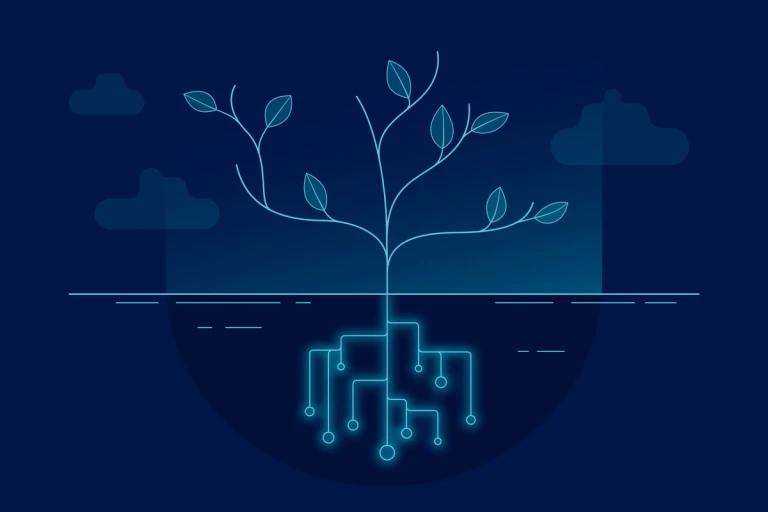Introduction
In today’s era when digital interaction shapes consumer expectations, modern website design has transcended aesthetic appeal to become a strategic business tool.
Websites are no longer static pages; they are dynamic, user-centered hubs that connect brands to audiences and drive measurable outcomes.
In Indonesia, a country rich with digital potential and a diverse consumer base, embracing modern website design principles is essential for businesses aiming to stand out in a competitive landscape.
From responsive layouts to multilingual capabilities, websites must cater to varied user preferences while leveraging advanced technologies like headless content management systems (CMS) to deliver content seamlessly across platforms.
This blog explores the foundational pillars of modern website design, the importance of multilingual and media-diverse content, and why these innovations are particularly crucial for businesses in Indonesia.
The Pillars of Modern Website Design
Responsive Design
The mobile-first paradigm has reshaped the digital landscape, especially in Indonesia, where mobile devices dominate internet access. Websites must adapt seamlessly to varying screen sizes, ensuring that users on smartphones, tablets, and desktops enjoy consistent and functional experiences.
Responsive design is not just a feature; it is a standard that ensures accessibility, reduces bounce rates, and enhances engagement. For businesses catering to Indonesia's diverse audience, failing to optimize for mobile can mean losing significant market share.
User-Centric Interfaces (UI/UX)
Designing for the end user is at the heart of modern website development. A visually stunning website is meaningless if users find it confusing or difficult to navigate. Streamlined interfaces, logical menu structures, and intuitive navigation are non-negotiables. For Indonesian audiences, incorporating culturally relevant design elements, such as localized imagery or familiar color palettes, can help establish trust and relatability.
User experience extends beyond navigation; it also encompasses speed and performance. Given Indonesia's varying internet speeds, optimizing load times is critical. Slow-loading pages can alienate users and diminish trust in your brand.
Accessibility Standards
Inclusive design is another cornerstone of modern website development. Accessibility features like keyboard navigation, screen reader compatibility, and high-contrast visual options ensure that websites are usable for all individuals, including those with disabilities.
For Indonesian businesses, inclusivity not only aligns with global best practices but also demonstrates a commitment to serving diverse audiences.
SEO Optimization
Search engine optimization (SEO) remains fundamental to ensuring that your website is discoverable. A well-designed site incorporates structured data, optimized images, and keyword-rich content while maintaining a seamless user experience.
For businesses in Indonesia, geo-specific SEO strategies, such as targeting local keywords and embedding location-based data, can improve visibility among regional audiences. Ranking well on platforms like Google Indonesia is vital for driving organic traffic and gaining a competitive edge.
Headless CMS for Seamless Content Management
In a digital world characterized by multichannel interactions, the traditional monolithic CMS is being replaced by headless CMS solutions. These systems decouple content management from front-end delivery, allowing businesses to distribute content across websites, apps, IoT devices, and even voice assistants. This flexibility is especially valuable here in Indonesia, where consumers interact with brands through diverse touchpoints.
For instance, a business can use a headless CMS to update product information across its website and mobile app simultaneously. This not only streamlines operations but also ensures consistency in messaging. As user preferences evolve, a headless CMS enables businesses to quickly adapt without undergoing a complete redesign.
eCommerce and Online Payments
Indonesia’s eCommerce sector is booming, fueled by a growing middle class and increased internet penetration. A modern website must support robust eCommerce capabilities, from product catalogs to secure payment gateways. Seamless integration with local payment options like GoPay, OVO, and DANA is essential to meet consumer expectations and build trust.
Equally important is providing users with an effortless checkout experience. Features like one-click payments, clear error notifications, and multiple language options can significantly enhance user satisfaction and reduce cart abandonment.
For businesses targeting Indonesian consumers, accommodating popular local platforms and ensuring smooth transactions are critical to staying competitive.
Conversion Tracking and Revenue Attribution
A visually appealing and functional website is just the beginning. Modern businesses need to measure the performance of their online efforts, especially in terms of conversion rates and revenue attribution. Tools like Google Analytics (GA4), Hotjar, and customer relationship management (CRM) systems provide actionable insights into user behavior and sales performance.
For Indonesian businesses, setting up goal tracking and linking it to advertising platforms like Google Ads or Meta’s suite of tools can provide a comprehensive view of what drives conversions. Understanding which campaigns, keywords, or pages lead to revenue helps businesses refine strategies and allocate budgets effectively.
The Importance of Multilingual Content
Indonesia’s cultural and linguistic diversity makes multilingual content an essential feature of modern website design. With over hundreds of languages spoken across the archipelago, offering content in multiple languages allows businesses to connect more deeply with users. Offering multilingual content in English can appeal to an international audience while Bahasa Indonesia makes local audiences feel right at home.
Multilingual sites require thoughtful architecture. Strategies such as language subdirectories (e.g., yoursite.com/id), and hreflang tags ensure that search engines display the correct language version to users. Additionally, automatic translation tools powered by AI can assist in scaling multilingual content, though human review is often necessary to maintain accuracy and cultural sensitivity.
Incorporating multilingual content also supports SEO efforts. By optimizing for language-specific keywords, businesses can expand their reach and improve visibility in search engine results tailored to regional preferences.
For example, an Indonesian user searching for “pembayaran online” will appreciate seeing content in Bahasa Indonesia, making them more likely to engage with your brand.
Geotargeted Strategies for Indonesian Website Development
Understanding local market nuances is key to succeeding in Indonesia. This vast and diverse country presents unique challenges and opportunities for website development. Design and functionality should reflect the preferences of regional users, such as incorporating popular social media links like WhatsApp or TikTok for sharing content.
Performance optimization tailored to local conditions is equally important. Many Indonesian users access the internet via 4G or slower connections, so lightweight designs and efficient coding practices can enhance usability. Incorporating local imagery and themes can also help businesses forge a stronger emotional connection with their audience.
Adopting geotargeted SEO strategies can further elevate a website's impact. For example, by including keywords like “website development Indonesia” in the metadata and content of this article, we are attempting to signal relevance to local users and improve our rankings in search results.
Future-Proofing Websites
A modern website is not a static asset; it is a dynamic tool that must evolve alongside technology and user expectations. Future-proofing involves designing with scalability in mind, allowing businesses to incorporate new features as needed without disrupting existing operations. This could include integrating augmented reality for eCommerce or adopting blockchain for secure payments.
Regular updates and iterative design processes are also essential. By analyzing user data and testing new features, businesses can continuously refine their websites to meet changing demands. For Indonesian brands, staying proactive in adapting to trends ensures sustained relevance in a competitive digital market.
Moving forward
Modern website design is a cornerstone of business success, especially in Indonesia's dynamic digital economy. From responsive layouts and multilingual content to advanced tools for tracking conversions, today’s websites must go beyond aesthetics to deliver functional and measurable value.
For businesses in Indonesia, embracing modern web development standards is not just an opportunity—it is a necessity. By leveraging the latest tools and strategies, brands can build user-centric platforms that connect with diverse audiences and drive tangible results.
The future belongs to businesses that invest in adaptable, inclusive, and innovative websites. Now is the time to start building.









